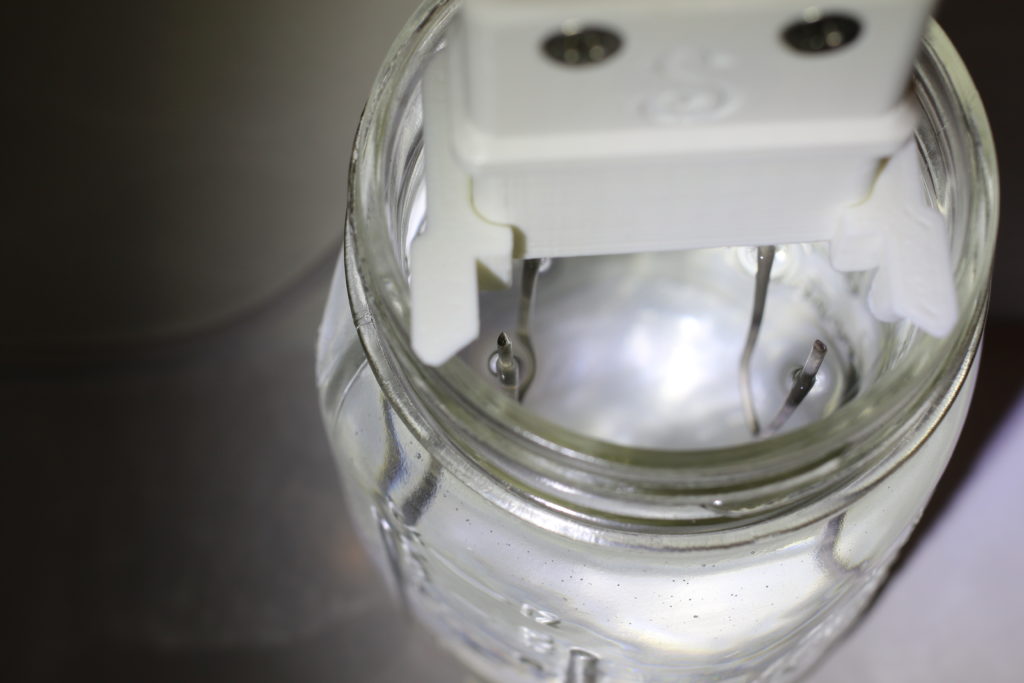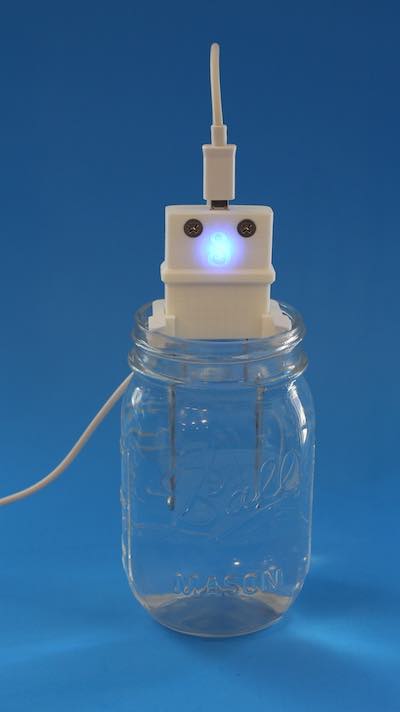What About Quality?
30 Years of Experience with Colloidal Silver
The SILVERengines proton produces 10ppm colloidal silver of the very highest quality. But, how does it do that, and how can I verify the quality?
By design, the proton produces particles less than 100 nanometers in diameter. In fact, 90% or more of the particles in the resulting solution are silver ions (Ag+), which are individual silver atoms missing an electron. The diameter of a silver atom is about 330 picometers, or one-third of one nanometer. This is quite invisibly small.
You can best measure the approximate PPM of the silver using an EC (Electrical Conductivity) meter, as explained in detail here. (Be sure to take your measurements immediately after production, because conductivity decreases over time).

The EC meter can only give you an estimate, though in our opinion, it is a fairly good one. But do you realize that the precise PPM of your colloidal silver isn’t really all that important?
The particle size and quantity are actually much more important than the exact PPM.
Our machines produce colloidal silver of a quality similar to Sovereign Silver TM brand, the leading supplier of ready-made colloidal silver. BTW, they have an excellent article that explains why “less is more,” and why it is a good idea to intentionally limit colloidal silver concentration to 10ppm:
To help you visualize why “smaller is better,” this very short video demonstrates that dividing any material into smaller and smaller pieces greatly increases its surface area.
Another good way to picture this is to compare and contrast a sugar cube with granulated sugar; smaller sugar crystals dissolve faster and disperse more quickly than a whole cube of sugar.
The silver ions generated by the proton are the smallest possible pieces of charged silver. Therefore, they offer the highest possible surface area as well as the anti-microbial bio-active nature of their positive charge.
However, over time, as the silver ions gradually gain stray electrons, higher concentrations of silver will result in silver atoms aggregating into larger and larger—and consequently less biologically effective—colloidal particles. This is why it is best to make and use your colloidal silver “fresh,” and to store any you keep at room temperature and away from light in completely filled, tightly sealed glass bottles.

But how can I verify the particles are nano size?
Surprisingly, and to a great degree, you can actually evaluate particle size at home with relatively simple means.
As a start, it is quite easy to demonstrate that the particle size is less than half a micron… You can prove this for yourself using an inexpensive laser pointer to produce what is called the Tyndall effect. This test demonstrates that the nano silver particles produced by the SILVERengines proton are less than the wavelength of the laser light. The most readily available lasers (often to be found at your neighborhood “dollar store”) are red in color (about 650nm wavelength). You can also purchase lasers in the shorter, violet range (about 405nm wavelength). With either laser, you can see that the predominant particle size is smaller then the light’s wavelength.
Of course, the Tyndall test does not tell us how much smaller the particles are, but the science behind the “constant-current method” that the SILVERengines proton employs to produce its results tells the rest of the story. By continuously regulating the current flow between the pure (.999 fine) silver rods at a very low value (~ 1/1000th of an Ampere per square inch), the SILVERengines proton ensures that the average particle size is considerably less than 100 microns, thus falling in the “nano” category.
The size of the silver particles is further proven by the fact that the resulting fluid is as clear as water, with no coloration resulting from the silver content. This lack of spectral absorption indicates that the silver particles are less than 5 nanometers in size. The largest commercial manufacturer of quality colloidal silver, Sovereign Silver, also mentions this on their website (look for “Surface Plasmon Resonance” on this linked page).
This blog article from Sovereign Silver also contains some excellent related information.
You might also enjoy reading a copy of our SILVERengines proton manual for more information on the science behind the Tyndall effect. You can find a link to download it here: https://SILVERengines.com/step-by-step
In fact, we hope you’ll browse our entire https://SILVERengines.com website, filled with useful and interesting information.
“The content of this website has not been evaluated by the FDA. Nothing herein is intended to diagnose, treat, cure, or prevent any disease.”
Copyright © 2014 to 2024 SILVERengines | Powered by Astra

